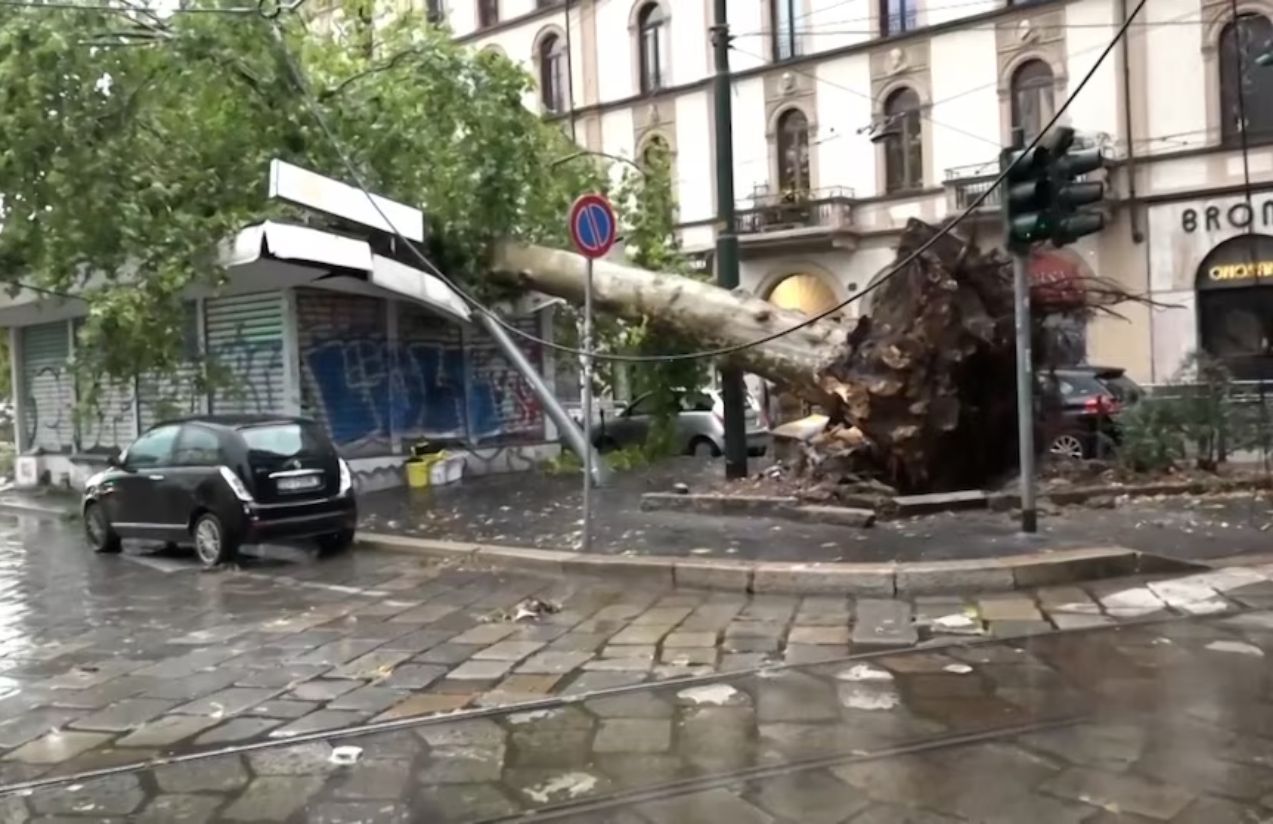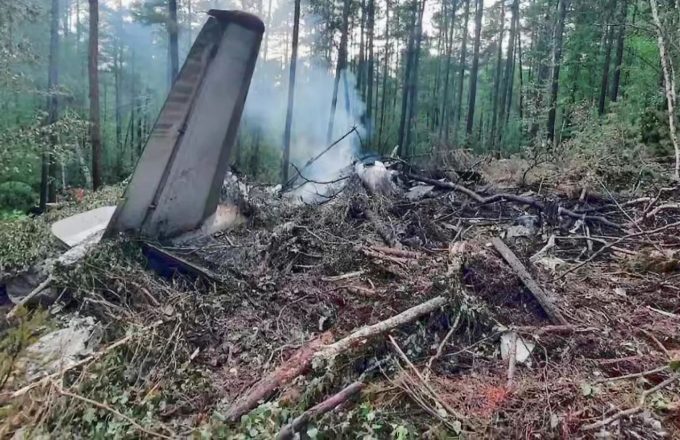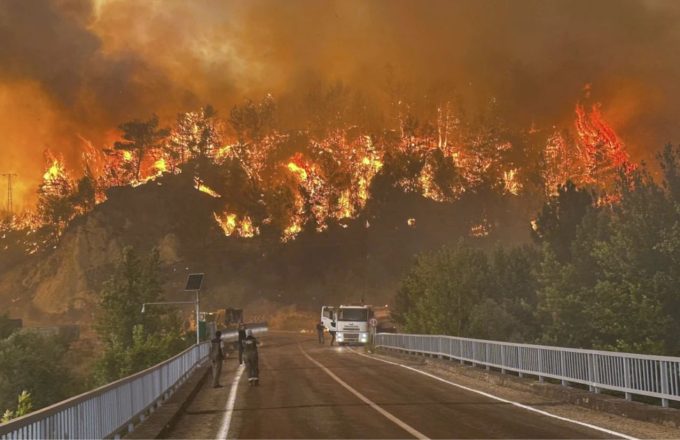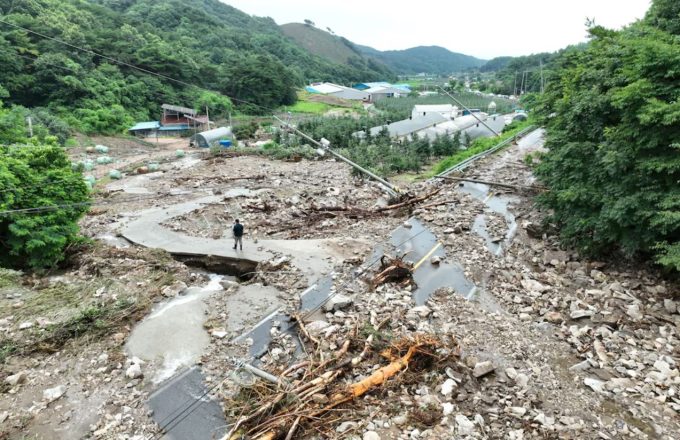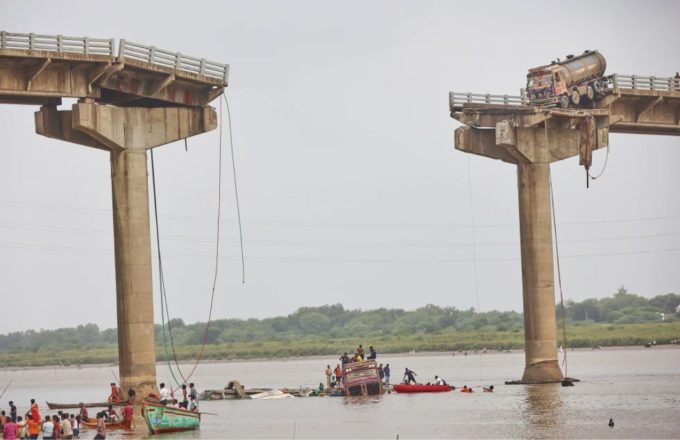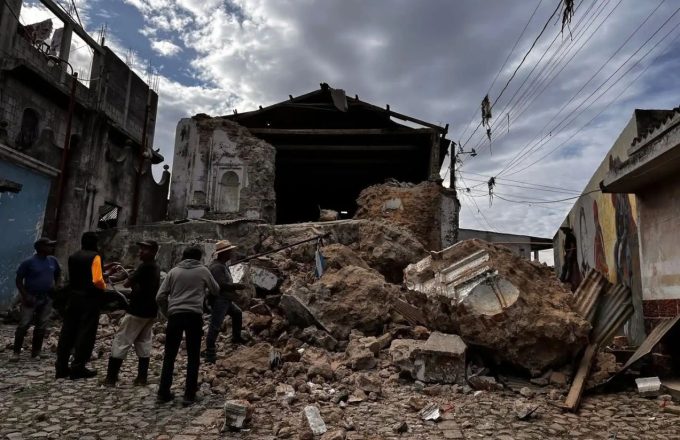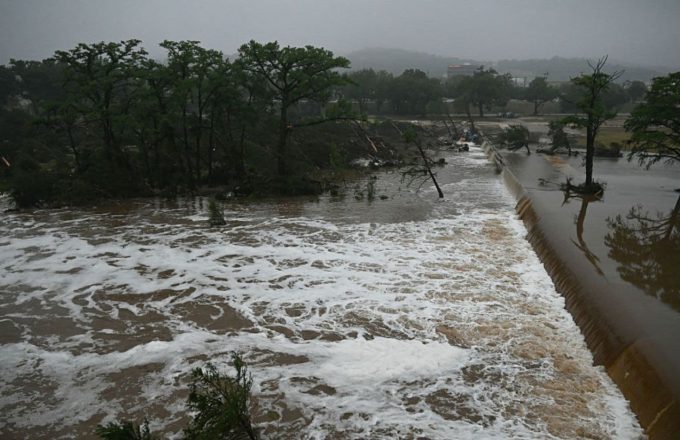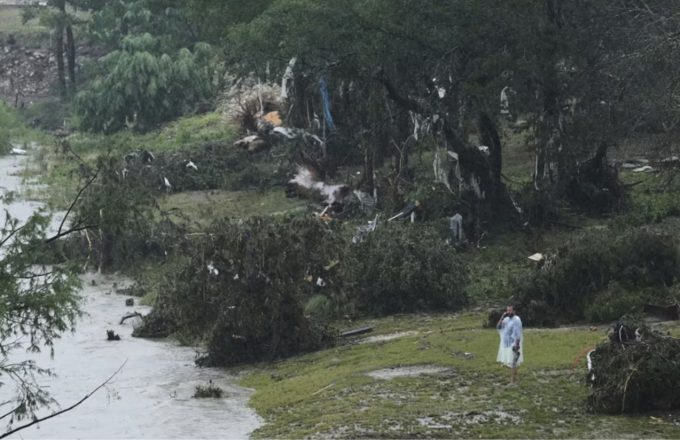A powerful storm swept through northern Italy on Sunday, claiming the life of a 63-year-old woman in the town of Robecchetto con Induno, west of Milan. According to local firefighters, the victim, a resident of San Vittore Olona, was struck and killed by a large tree while walking through a wooded area with two companions, who were injured in the incident.
The two survivors—a 68-year-old woman and a 70-year-old man—were taken to the hospital with moderate injuries and listed in yellow code. The accident occurred in the rural area of Cascina Induno, at the height of the storm that broke out early Sunday afternoon.
Emergency services responded to at least 50 storm-related incidents, with another 37 still pending. Most involved fallen trees, flooded basements and businesses, and advertising billboards knocked down by strong winds.
Milan’s mayor, Giuseppe Sala, urged residents to exercise caution via social media, advising them to remain vigilant at least until nightfall. Although some flooding was reported in the city, local authorities confirmed that the Seveso River remained under control.
The storm also disrupted rail transport. A lightning strike hit a train on the Milan–Bologna line, causing delays of over an hour. Italy’s national railway network reported that high-speed traffic on the Milan–Bologna line had been slowed, with trains being rerouted onto conventional tracks, extending travel times by up to 60 minutes.
The effects of the storm extended beyond Lombardy. In the Veneto region, heavy rains and hail battered areas around Belluno, Vicenza, and the Alpine foothills. In Vittorio Veneto, the Meschio River overflowed overnight, flooding garages and basements.
In Tuscany, the storm caused trees to fall on parked cars in Florence. In the nearby town of Montespertoli, a lightning strike split a cypress tree in two, and rainfall reached up to 60 millimeters in just one hour. The region recorded over 27,000 lightning strikes in 12 hours, with San Gimignano particularly hard-hit by a torrential downpour that dropped 60 mm of rain in a single hour.
Further west in Novara, Piedmont, strong winds and heavy rain were also reported, although no major damage or injuries occurred.
The storm marked a stark contrast to the record-breaking heatwave that had scorched northern Italy in the days prior, with temperatures soaring past 40°C (104°F) in some areas.
Meteorological authorities had issued orange alerts for Lombardy and Veneto, along with yellow warnings for eastern Liguria and hydraulic risk alerts in Valle d’Aosta, Trentino-Alto Adige, Friuli Venezia Giulia, Tuscany, much of Piedmont, and Emilia-Romagna.
Experts warned of the formation of dangerous “supercell” storms—towering systems that can reach heights of 10 to 12 kilometers and contain rotating mesocyclones. These storm cells, especially hazardous after extended periods of extreme heat, underscore the growing climate challenges facing the country.


